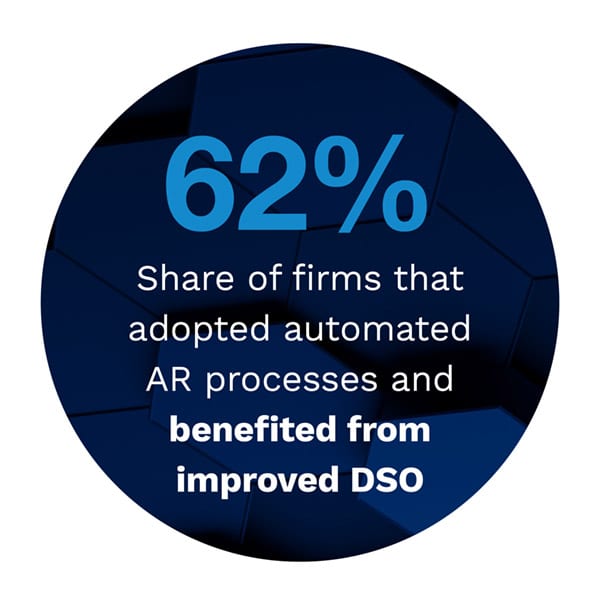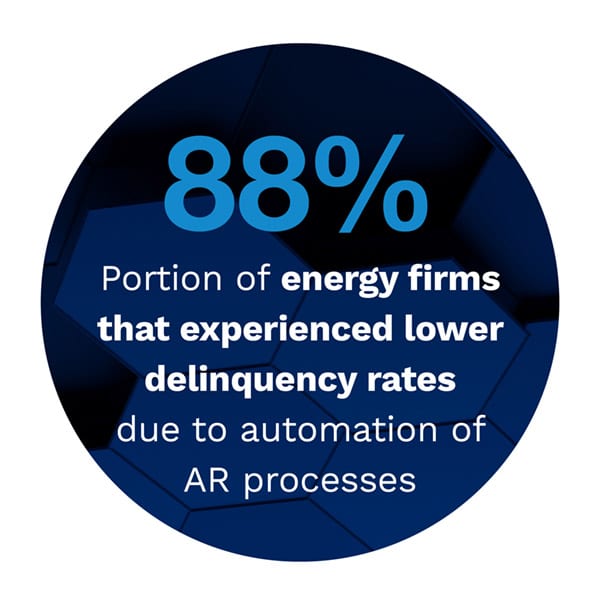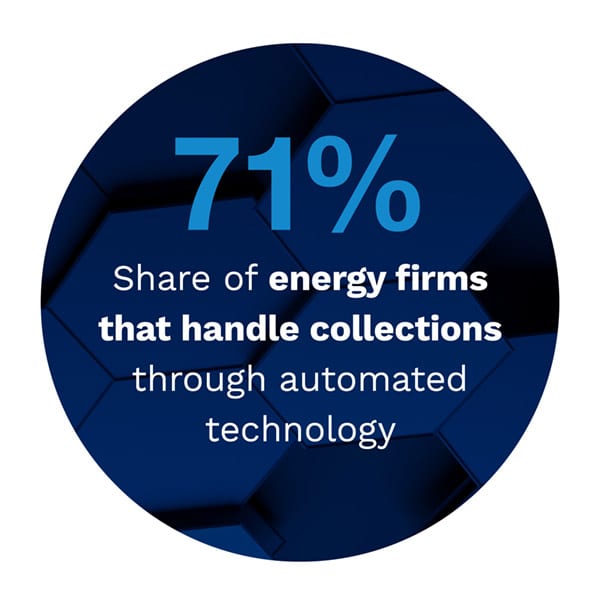The company ultimately decided to automate its accounts receivable (AR) operations, including its remittances, customer deduction codes and collection claims, which optimized its collections processes and significantly improved overall productivity.
 Danone is a case study demonstrating the positive impacts that AR automation can have on firms’ collections processes. PYMNTS research found that firms using automated AR technologies stand to observe a 23 percent improvement in prioritizing collections compared to those that use manual methods. This helps firms improve their cash flows, reduces days sales outstanding (DSO) and reduces delinquency rates.
Danone is a case study demonstrating the positive impacts that AR automation can have on firms’ collections processes. PYMNTS research found that firms using automated AR technologies stand to observe a 23 percent improvement in prioritizing collections compared to those that use manual methods. This helps firms improve their cash flows, reduces days sales outstanding (DSO) and reduces delinquency rates.
The B2B Payments Innovation Readiness Playbook: The Impact Of Automated AR Processes On Collection Cycles, a PYMNTS and American Express collaboration, analyzes how manual processes impact AR for businesses across a variety of sectors and explores how automation can help firms improve their collection cycles and reduce the average DSO. The Playbook draws from a survey of 460 treasury executives from AR, billing, cash application, credit, collections and treasury management departments.
The survey interviewed executives from the advertising, technology, construction, energy and healthcare sectors, and respondents were evenly distributed among companies with annual revenues of less than $50 million, those with revenues between $50 million and $500 million, and those with more than $500 million in yearly revenues.
Businesses that still rely on manual AR processes hinder their collections processes. This is especi ally true for firms in the construction and healthcare spaces, which are more reliant on manual collection methods that result in longer collection cycles. Healthcare firms take an average of 25.3 days to follow up on late payments, while construction firms take an average of 22 days to do so. Those values are 43 percent and 24 percent above the average for all firms, respectively.
ally true for firms in the construction and healthcare spaces, which are more reliant on manual collection methods that result in longer collection cycles. Healthcare firms take an average of 25.3 days to follow up on late payments, while construction firms take an average of 22 days to do so. Those values are 43 percent and 24 percent above the average for all firms, respectively.
Sectors that have been more progressive about adopting automated technology reap the benefits of smoother collections processes. For example, technology firms take 19 days to follow up on collections, whereas energy firms take 12 days and advertising businesses take only 11 days. This means that energy and advertising DSO processes are 36 percent and 37 percent shorter, respectively. These differences illustrate that firms in the healthcare and construction sectors have much to gain from automating their collections efforts, including more visibility into their finances and smoother cash flows.
 PYMNTS research also found that 62 percent of the firms that adopted automated AR processes witnessed improved DSO and that 49 percent achieved lower delinquency rates. This is especially true for energy and advertising firms that have invested in automation, as 88 percent and 87 percent of these businesses, respectively, recognize these as key benefits of AR automation. Firms with higher degrees of AR automation in place have lower delinquency rates. Furthermore, 71 percent of advertising businesses and 69 percent of energy firms say automation has helped them reduce the delinquency rates of their receivables.
PYMNTS research also found that 62 percent of the firms that adopted automated AR processes witnessed improved DSO and that 49 percent achieved lower delinquency rates. This is especially true for energy and advertising firms that have invested in automation, as 88 percent and 87 percent of these businesses, respectively, recognize these as key benefits of AR automation. Firms with higher degrees of AR automation in place have lower delinquency rates. Furthermore, 71 percent of advertising businesses and 69 percent of energy firms say automation has helped them reduce the delinquency rates of their receivables.
These findings highlight just a few of the insights found in our research. To learn more about how automation can help firms improve their collection cycles and reduce average DSO, download the report.

 Danone, a European food and beverage company, was experiencing challenges with cash application and a lack of visibility into its cash flows as the processes were managed with a high degree of manual intervention.
Danone, a European food and beverage company, was experiencing challenges with cash application and a lack of visibility into its cash flows as the processes were managed with a high degree of manual intervention.





